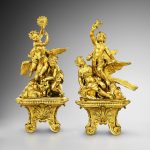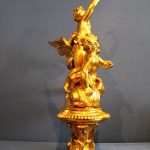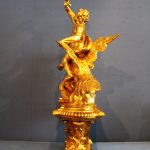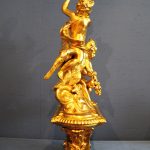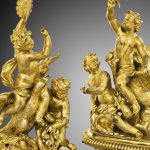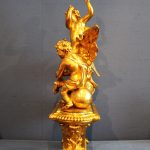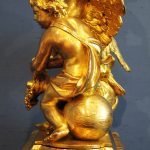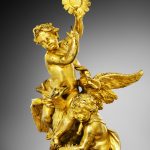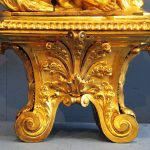A pair of Louis XIV gilt bronze chenets representing the Four Elements
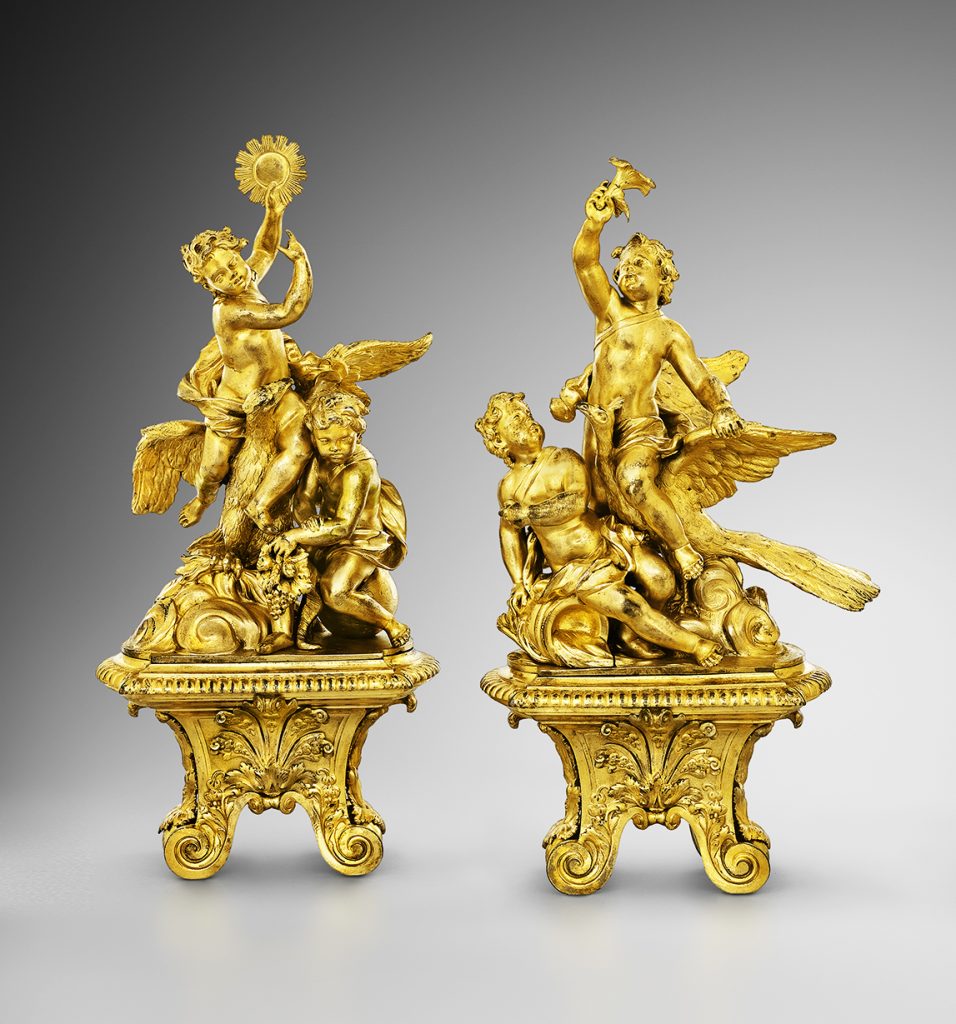
A pair of Louis XIV gilt bronze chenets representing the Four Elements-circa 1710
Height: 48.5 and 49.5 cm. (19 and 19 ½ in.)
Width: 22.5 cm. (8 ¾ in.) Depth: 12.5 cm. (5 in.)
Provenance :
Collection of ‘M. Boucheron’ (possibly Frédéric Boucheron, 26, place Vendôme), by 1900
Sold Galerie Jean Charpentier, Paris, 28 May 1935, lot 68, illustrated pl. XI
Galerie Fabre, Paris, by 1996
The Fellowship of Friends, USA
Sold Sotheby’s, New York, 3 June 2008, lot 22
Exhibited :
Exposition universelle de 1900: Le Mobilier à travers les âges aux Grand et Petit Palais: Intérieurs XVIIIe et XIXe siècles: Exposition centenale, Paris, 1902, illustrated pl. 40, nos. 2 and 3 (from the Boucheron collection)
Literature :
Connaissance des Arts, September 1996, p. 70 (ill.)
Comparative Literature :
G.Wilson et al., French Furniture and Gilt Bronzes: Baroque and Régence: Catalogue of the J. Paul Getty Museum Collection, Los Angeles, 2008, pp. 360-367
The first group represents a child holding a solar disk riding an eagle (Zeus) clasping thunderbolts besides a child seated on a terrestrial globe holding a cornucopia, thus symbolizing the elements of fire and earth. The second group has a child holding a morning glory flower straddling a peacock (Juno) beside another child leaning on a pouring barrel; in this case the elements of water and, by a process of elimination, air, are evoked. The original bases consist of elliptical plinths with gadrooned borders, above two volutes centred by a foliated shell.
An almost identical pair of chenets is in the J. Paul Getty Museum, Los Angeles. The only difference is that the Getty pair is cast with a chameleon held by the putto instead of the flower – the chameleon being an ancient symbol for air. As noted by Wilson, op. cit., p. 360, these chenets incorporate sophisticated iconography suggesting that they were designed by a sculptor well versed in classical literature. She further notes that they could well have been intended for a connoisseur with exceptionally refined taste, “perhaps for a small library or cabinet”.
The modelling of the infants resembles the work of a number of different sculptors of the period who were working to produce sculpture for the gardens at Versailles; as further noted by Wilson “the bronzes of eight groups of children made between 1685 and 1688 for the Parterre d’Eau… by sculptors Corneille Van Clève (1646-1732), Pierre Granier (1635-1715), François Lespignola (1644-1705)… are especially comparable”.
Two other similar pairs of chenets are recorded: one pair (formerly with Rosenberg & Stiebel, New York) was sold, Christie’s, New York, 5 November 1986, lot 65. This pair has an almost identical group but is raised on nineteenth century bases. A second, simplified, pair is in the Château de Champs-Sur-Marne in the eastern outskirts of Paris. A pair of virtually identical patinated bronze groups, raised on smaller simpler ormolu stands and not intended to be used as chenets was sold, Sotheby’s, Paris, 5 July 2001, lot 14.

